The Portable Nineteenth-Century African American Women Writers Read online
Page 17
—SEMPER FIDELIS.
17
ABBY FISHER
(ca. 1832–after 1881)
Abby Fisher was born, likely into slavery, in South Carolina, somewhere near 1832. Around the year 1880, she moved with her family to San Francisco where she began a successful pickling business, selling pickles, jellies, and preserves. Her business grew, and in 1881, with the help of influential friends and the San Francisco Women’s Co-op Printing Office, she published the cookbook What Mrs. Fisher Knows About Old Southern Cooking, one of the first cookbooks to contain African American recipes. The book is credited with adding plantation-style cooking to the canon of American cuisine, allowing, for the first time, cooks not necessarily Southern or black to familiarize themselves with “Old Southern Cooking.” Fisher’s San Francisco catering business, which initially sparked the public’s interest in her cooking style, was very successful, and her food was in demand across the bay region. Fisher’s book and biography give us a glimpse into western black America, an area of history that remains neglected by most scholars of African American history and literature.
Abby Fisher was illiterate; the cookbook was compiled by friends to whom Fisher dictated her recipes. In her “Preface and Apology,” Fisher credits these friends with the idea for publishing her recipes, but nonetheless expresses pride in her long experience. The recipes are notable for their simplicity and casual tone.
Selections from What Mrs. Fisher Knows About Old Southern Cooking, Soups, Pickles, Preserves, Etc. (1881)
SOURCE: Abby Fisher, What Mrs. Fisher Knows About Old Southern Cooking, Soups, Pickles, Preserves, Etc. (San Francisco: San Francisco Women’s Co-op Printing Office, 1881).
Preface and Apology
The publication of a book on my knowledge and experience of Southern Cooking, Pickle and Jelly Making, has been frequently asked of me by my lady friends and patrons in San Francisco and Oakland, and also by ladies of Sacramento during the State Fair in 1879. Not being able to read or write myself, and my husband also having been without the advantages of an education—upon whom would devolve the writing of the book at my dictation—caused me to doubt whether I would be able to present a work that would give perfect satisfaction. But, after due consideration, I concluded to bring forward a book of my knowledge—based on an experience of upward of thirty-five years—in the art of cooking Soups, Gumbos, Terrapin Stews, Meat Stews, Baked and Roast Meats, Pastries, Pies and Biscuits, making Jellies, Pickles, Sauces, Ice-Creams and Jams, Preserving Fruits, etc. The book will be found a complete instructor, so that a child can understand it and learn the art of cooking.
Respectfully,
MRS. ABBY FISHER,
LATE OF MOBILE, ALA.
Jumberlie—A Creole Dish
Take one chicken and cut it up, separating every joint, and adding to it one pint of cleanly-washed rice. Take about half a dozen large tomatoes, scalding them well and taking the skins off with a knife. Cut them in small pieces and put them with the chicken in a pot or large porcelain saucepan. Then cut in small pieces two large pieces of sweet ham and add to the rest, seasoning high with pepper and salt. It will cook in twenty-five minutes. Do not put any water on it.
Oyster Gumbo Soup
Take an old chicken, cut into small pieces, salt and black pepper. Dip it well in flour, and put it on to fry, over a slow fire, till brown; don’t let it burn. Cut half of a small onion very fine and sprinkle on chicken while frying. Then place chicken in soup pot, add two quarts of water and let boil to three pints. Have one quart of fresh oysters with all the liquor that belongs to them, and before dishing up soup, add oysters and let come to a boil the second time, then stir into soup one tablespoonful of gumbo [filé powder] quickly. Dish up and send to table. Have parsley chopped very fine and put in tureen on dishing up soup. Have dry boiled rice to go to table with gumbo in separate dish. Serve one tablespoonful of rice to a plate of gumbo.
Tonic Bitters—A Southern Remedy for Invalids
Take one ounce of cardamom seed, one ounce of Peruvian bark bruised, two ounces of Gentian root bruised, half ounce of dry orange peel, one ounce of aloes, and put the whole into half a gallon of best whiskey or brandy; let it come to a boil, then strain or filter it through a fine cloth or filtering paper.
Dose half wineglassfull three times a day before meals. Will strengthen and produce an appetite.
Sweet Cucumber Pickles
Take as many pickles as you want to make that have already been pickled in vinegar, and slice them in four pieces lengthwise, or cut them crosswise the thickness of a silver half-dollar, and place them in an earthen jar in layers of about three inches in thickness, covering each layer of pickles all over with granulated sugar. Keep repeating the layers three inches thick and covering them with sugar until you have placed all the pickles under sugar you have cut up. Let them remain under the sugar twenty-four hours, then take them out and put them in jars. Then make a syrup in the following way: One quart of sugar to one quart of clear water, and let it boil down to one quart. You will then have one quart of pure syrup. Add one tea-cup of wine vinegar to one pint of syrup, then add the vinegar syrup to the pickles until they are thoroughly covered. Always use granulated sugar.
Pap for Infant Diet
Take one pint of flour, sift it and tie it up in a clean cloth securely tight, so that no water can get into it; and put it in boiling water and let it boil steady for two hours, then take it out of water, and when it gets cold take outside crust from it. Whenever you are ready to nurse or feed the child, grate one tablespoonful of the boiled flour, and stir it into half a pint of boiled milk while the milk is boiling; sweeten the same with white sugar to taste. When the child has diarrhea, boil a two-inch stick of cinnamon in the pap. I have given birth to eleven children and raised them all, and nursed them with this diet. It is a Southern plantation preparation.
NORTHERN WOMEN AND THE POST-WAR SOUTH
18
CHARLOTTE FORTEN GRIMKÉ
(1837–1914)
The highly accomplished Charlotte Forten Grimké had the good fortune to be born into one prominent abolitionist family and marry into another. Her father was the scion of a distinguished and wealthy family of anti-slavery activists, while her mother, a former slave and the granddaughter of the white Governor Samuel Johnson of North Carolina, was emancipated and established in Philadelphia by her white father. The Forten family’s circle of acquaintances included such figures as William Lloyd Garrison and John Greenleaf Whittier. Charlotte Forten taught both black and white students in Salem, Massachusetts, a rarity at that time. She later married Francis Grimké of the noted southern abolitionist family, continuing her work as a teacher and later as a clerk at the United States Treasury. Grimké’s niece, Angelina Weld Grimké, whom Grimké helped raise, became an important figure in the Harlem Renaissance.
During the Civil War, Grimké traveled South as part of the Port Royal Experiment. Union soldiers had captured the South Carolina Sea Islands, the site of a large plantation, and established a school for the newly freed people there. Grimké was the first African American teacher to volunteer for the program. Many of her dispatches from this time, including this one, “Life on the Sea Islands,” were published serially in the Atlantic in 1864. One of the poems included in this volume, “The Gathering of the Grand Army,” was written in Boston on August 12, 1890.
“Life on the Sea Islands” (1864)
SOURCE: Charlotte Forten, “Life on the Sea Islands,” Atlantic Monthly (May 1864).
[To THE EDITOR OF THE “ATLANTIC MONTHLY.”—The following graceful and picturesque description of the new condition of things on the Sea Islands of South Carolina, originally written for private perusal, seems to me worthy of a place in the “Atlantic.” Its young author—herself akin to the long-suffering race whose Exodus she so pleasantly describes—is still engaged in her labor of love on St. Helena Island. —J. G. W.]
It was on the afternoon of a warm, murky day late in October that our steamer, the United States, touched the landing at Hilton Head. A motley assemblage had collected on the wharf,—officers, soldiers, and “contrabands” of every size and hue: black was, however, the prevailing color. The first view of Hilton Head is desolate enough,—a long, low, sandy point, stretching out into the sea, with no visible dwellings upon it, except the rows of small white-roofed houses which have lately been built for the freed people.
After signing a paper wherein we declared ourselves loyal to the Government, and wherein, also, were set forth fearful penalties, should we ever be found guilty of treason, we were allowed to land, and immediately took General Saxton’s boat, the Flora, for Beaufort. The General was on board, and we were presented to him. He is handsome, courteous, and affable, and looks—as he is—the gentleman and the soldier.
From Hilton Head to Beaufort the same long, low line of sandy coast, bordered by trees; formidable gunboats in the distance, and the gray ruins of an old fort, said to have been built by the Huguenots more than two hundred years ago. Arrived at Beaufort, we found that we had not yet reached our journey’s end. While waiting for the boat which was to take us to our island of St. Helena, we had a little time to observe the ancient town. The houses in the main street, which fronts the “Bay,” are large and handsome, built of wood, in the usual Southern style, with spacious piazzas, and surrounded by fine trees. We noticed in one yard a magnolia, as high as some of our largest shade—maples, with rich, dark, shining foliage. A large building which was once the Public Library is now a shelter for freed people from Fernandina. Did the Rebels know it, they would doubtless upturn their aristocratic noses, and exclaim in disgust, “To what base uses,” etc. We confess that it was highly satisfactory to us to see how the tables are turned, now that “the whirligig of time has brought about its revenges.” We saw the market-place, in which slaves were sometimes sold; but we were told that the buying and selling at auction were usually done in Charleston. The arsenal, a large stone structure, was guarded by cannon and sentinels. The houses in the smaller streets had, mostly, a dismantled, desolate look. We saw no one in the streets but soldiers and freed people. There were indications that already Northern improvements had reached this Southern town. Among them was a wharf, a convenience that one wonders how the Southerners could so long have existed without. The more we know of their mode of life, the more are we inclined to marvel at its utter shiftlessness.
Little colored children of every hue were playing about the streets, looking as merry and happy as children ought to look,—now that the evil shadow of Slavery no longer hangs over them. Some of the officers we met did not impress us favorably. They talked flippantly, and sneeringly of the negroes, whom they found we had come down to teach, using an epithet more offensive than gentlemanly. They assured us that there was great danger of Rebel attacks, that the yellow fever prevailed to an alarming extent, and that, indeed, the manufacture of coffins was the only business that was at all flourishing at present. Although by no means daunted by these alarming stories, we were glad when the announcement of our boat relieved us from their edifying conversation. We rowed across to Ladies Island, which adjoins St. Helena, through the splendors of a grand Southern sunset. The gorgeous clouds of crimson and gold were reflected as in a mirror in the smooth, clear waters below. As we glided along, the rich tones of the negro boatmen broke upon the evening stillness,—sweet, strange, and solemn—“Jesus make de blind to see, Jesus make de cripple walk, Jesus make de deaf to hear. Walk in, kind Jesus! No man can bender me.”
It was nearly dark when we reached the island, and then we had a three-miles’ drive through the lonely roads to the house of the superintendent. We thought how easy it would be for a band of guerrillas, had they chanced that way, to seize and hang us; but we were in that excited, jubilant state of mind which makes fear impossible, and sang “John Brown” with a will, as we drove through the pines and palmettos. Oh, it was good to sing that song in the very heart of Rebeldom! Harry, our driver, amused us much. He was surprised to find that we had not heard of him before. “Why, I thought eberybody at de Nort had heard o’ me!” he said, very innocently. We learned afterward that Mrs. F., who made the tour of the islands last summer, had publicly mentioned Harry. Some one had told him of it, and he of course imagined that he had become quite famous. Notwithstanding this little touch of vanity, Harry is one of the best and smartest men on the island.
Gates occurred, it seemed to us, at every few yards’ distance, made in the oddest fashion,—opening in the middle, like folding-doors, for the accommodation of horsemen. The little boy who accompanied us as gate-opener answered to the name of Cupid. Arrived at the headquarters of the general superintendent, Mr. S., we were kindly received by him and the ladies, and shown into a large parlor, where a cheerful wood-fire glowed in the grate. It had a home-like look; but still there was a sense of unreality about everything, and I felt that nothing less than a vigorous “shaking-up,” such as Grandfather Smallweed daily experienced, would arouse me thoroughly to the fact that I was in South Carolina. The next morning L. and I were awakened by the cheerful voices of men and women, children and chickens, in the yard below. We ran to the window, and looked out. Women in bright-colored handkerchiefs, some carrying pails on their heads, were crossing the yard, busy with their morning work; children were playing, and tumbling around them. On every face there was a look of serenity and cheerfulness. My heart gave a great throb of happiness as I looked at them, and thought, “They are free! so long down-trodden, so long crushed to the earth, but now in their old homes, forever free!” And I thanked God that I had lived to see this day.
After breakfast Miss T. drove us to Oaklands, our future home. The road leading to the house was nearly choked with weeds. The house itself was in a dilapidated condition, and the yard and garden had a sadly neglected look. But there were roses in bloom; we plucked handfuls of feathery, fragrant acacia-blossoms; ivy crept along the ground and under the house. The freed people on the place seemed glad to see us. After talking with them, and giving some directions for cleaning the house, we drove to the school, in which I was to teach. It is kept in the Baptist Church,—a brick building, beautifully situated in a grove of live-oaks. These trees are the first objects that attract one’s attention here: not that they are finer than our Northern oaks, but because of the singular gray moss with which every branch is heavily draped. This hanging moss grows on nearly all the trees, but on none so luxuriantly as on the live-oak. The pendants are often four or five feet long, very graceful and beautiful, but giving the trees a solemn, almost funereal look. The school was opened in September. Many of the children had, however, received instruction during the summer. It was evident that they had made very rapid improvement, and we noticed with pleasure how bright and eager to learn many of them seemed. They sang in rich, sweet tones, and with a peculiar swaying motion of the body, which made their singing the more effective. They sang “Marching Along,” with great spirit, and then one of their own hymns, the air of which is beautiful and touching—
“My sister, you want to git religion,
Go down in de Lonesome Valley; My brudder,
you want to git religion,
Go down in de Lonesome Valley.
CHORUS.
“Go down in de Lonesome Valley,
Go down in de Lonesome Valley, my Lord,
Go down in de Lonesome Valley,
To meet my Jesus dere!
“Oh, feed on milk and honey,
Oh, feed on milk and honey, my Lord,
Oh, feed on milk and honey,
Meet my Jesus dere!
Oh, John he brought a letter,
Oh, John he brought a letter, my Lord,
Oh, Mary and Marta read ’em
Meet my Jesus dere!
CHORUS.
“Go down in de Lonesome
Valley,” etc.
They repeat their hymns several times, and while singing keep perfect time with their hands and feet. On our way homeward we noticed that a few of the trees were beginning to turn, but we looked in vain for the glowing autumnal hues of our Northern forests. Some brilliant scarlet berries—the cassena—were growing along the road-side, and on every hand we saw the live-oak with its moss-drapery. The palmettos disappointed me stiff and ungraceful, they have a bristling, defiant look, suggestive of Rebels starting up and defying everybody. The land is low and level,—not the slightest approach to a hill, not a rock, nor even a stone to be seen. It would have a desolate look, were it not for the trees, and the hanging moss and numberless vines which festoon them. These vines overrun the hedges, form graceful arches between the trees, en-circle their trunks, and sometimes climb to the topmost branches. In February they begin to bloom, and then through-out the spring and summer we have a succession of beautiful flowers. First comes the yellow jessamine, with its perfect, gold-colored, and deliciously fragrant blossoms. It lights up the hedges, and completely canopies some of the trees. Of all the wild-flowers this seems to me the most beautiful and fragrant. Then we have the snow-white, but scentless Cherokee rose, with its lovely, shining leaves. Later in the season come the brilliant trumpet-flower, the passion-flower, and innumerable others.

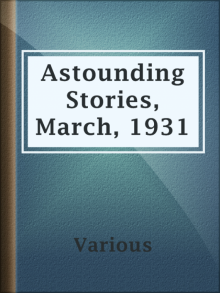 Astounding Stories, March, 1931
Astounding Stories, March, 1931 Astounding Stories, February, 1931
Astounding Stories, February, 1931 Futuria Fantasia, Spring 1940
Futuria Fantasia, Spring 1940 The King's Daughter and Other Stories for Girls
The King's Daughter and Other Stories for Girls Uncanny Tales
Uncanny Tales Masters of Noir: Volume Two
Masters of Noir: Volume Two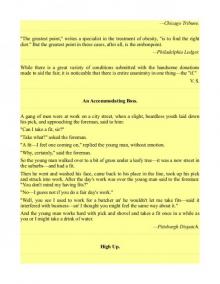 Witty Pieces by Witty People
Witty Pieces by Witty People Sylvaneth
Sylvaneth Space Wolves
Space Wolves Hammerhal & Other Stories
Hammerhal & Other Stories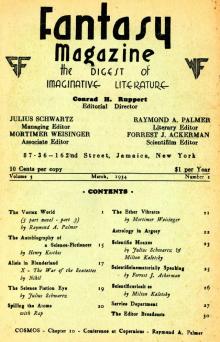 The Fantasy Fan, March, 1934
The Fantasy Fan, March, 1934 Astounding Stories of Super-Science, August 1930
Astounding Stories of Super-Science, August 1930 Astounding Stories, August, 1931
Astounding Stories, August, 1931 The Burden of Loyalty
The Burden of Loyalty Return to Wonderland
Return to Wonderland Anthology - A Thousand Doors
Anthology - A Thousand Doors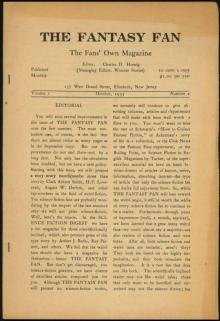 The Fantasy Fan, October 1933
The Fantasy Fan, October 1933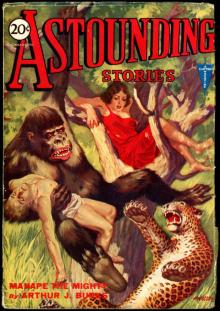 Astounding Stories, June, 1931
Astounding Stories, June, 1931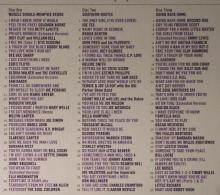 Southern Stories
Southern Stories Astounding Stories of Super-Science, May, 1930
Astounding Stories of Super-Science, May, 1930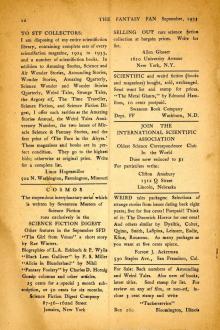 The Fantasy Fan December 1933
The Fantasy Fan December 1933 Adventures in Many Lands
Adventures in Many Lands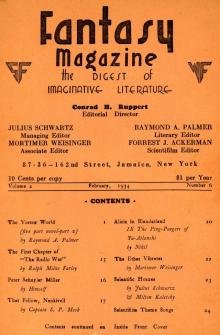 The Fantasy Fan February 1934
The Fantasy Fan February 1934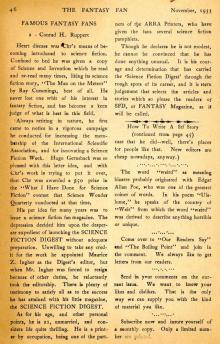 The Fantasy Fan November 1933
The Fantasy Fan November 1933 Astounding Stories, April, 1931
Astounding Stories, April, 1931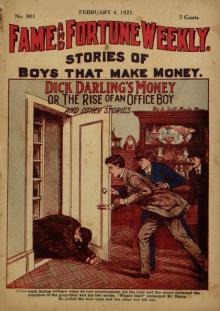 Fame and Fortune Weekly, No. 801, February 4, 1921
Fame and Fortune Weekly, No. 801, February 4, 1921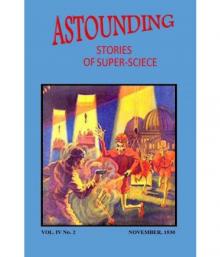 Astounding Stories of Super-Science, November, 1930
Astounding Stories of Super-Science, November, 1930 Astounding Stories of Super-Science January 1931
Astounding Stories of Super-Science January 1931 A Monk of Fife
A Monk of Fife Astounding Stories of Super-Science September 1930
Astounding Stories of Super-Science September 1930 Astounding Stories of Super-Science July 1930
Astounding Stories of Super-Science July 1930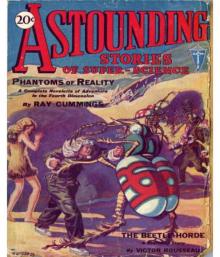 Astounding Stories of Super-Science, June, 1930
Astounding Stories of Super-Science, June, 1930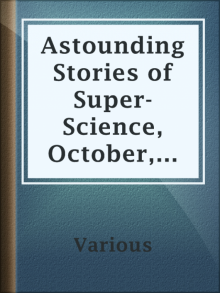 Astounding Stories of Super-Science, October, 1930
Astounding Stories of Super-Science, October, 1930 Astounding Stories of Super-Science, March 1930
Astounding Stories of Super-Science, March 1930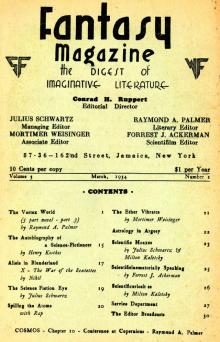 The Fantasy Fan January 1934
The Fantasy Fan January 1934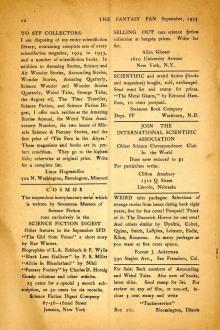 The Fantasy Fan September 1933
The Fantasy Fan September 1933 Astounding Stories of Super-Science February 1930
Astounding Stories of Super-Science February 1930 Astounding Stories, May, 1931
Astounding Stories, May, 1931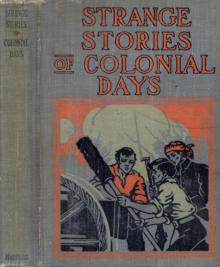 Strange Stories of Colonial Days
Strange Stories of Colonial Days Golden Age of Science Fiction Vol IX
Golden Age of Science Fiction Vol IX Astounding Stories of Super-Science, December 1930
Astounding Stories of Super-Science, December 1930 Evolutions: Essential Tales of the Halo Universe
Evolutions: Essential Tales of the Halo Universe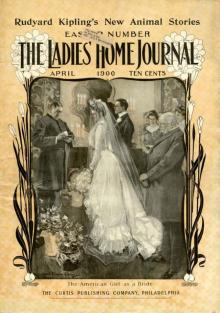 Good Stories Reprinted from the Ladies' Home Journal of Philadelphia
Good Stories Reprinted from the Ladies' Home Journal of Philadelphia Dragons!
Dragons! Murder Takes a Holiday
Murder Takes a Holiday Legacies of Betrayal
Legacies of Betrayal STAR WARS: TALES FROM THE CLONE WARS
STAR WARS: TALES FROM THE CLONE WARS Strange New Worlds 2016
Strange New Worlds 2016 Lippincott's Magazine, August, 1885
Lippincott's Magazine, August, 1885 Golden Age of Science Fiction Vol X
Golden Age of Science Fiction Vol X Hot Stuff
Hot Stuff Santa Wore Spurs
Santa Wore Spurs Paranormal Erotica
Paranormal Erotica Tangled Hearts: A Menage Collection
Tangled Hearts: A Menage Collection Sweet Tea and Jesus Shoes
Sweet Tea and Jesus Shoes The Journey Prize Stories 25
The Journey Prize Stories 25 Wild Western Tales 2: 101 Classic Western Stories Vol. 2 (Civitas Library Classics)
Wild Western Tales 2: 101 Classic Western Stories Vol. 2 (Civitas Library Classics) (5/15) The Golden Age of Science Fiction Volume V: An Anthology of 50 Short Stories
(5/15) The Golden Age of Science Fiction Volume V: An Anthology of 50 Short Stories (4/15) The Golden Age of Science Fiction Volume IV: An Anthology of 50 Short Stories
(4/15) The Golden Age of Science Fiction Volume IV: An Anthology of 50 Short Stories Ten Journeys
Ten Journeys The Boss
The Boss The Penguin Book of French Poetry
The Penguin Book of French Poetry Golden Age of Science Fiction Vol VIII
Golden Age of Science Fiction Vol VIII His Cinderella Housekeeper 3-in-1
His Cinderella Housekeeper 3-in-1 The Magazine of Fantasy & Science Fiction - July/August 2016
The Magazine of Fantasy & Science Fiction - July/August 2016 PYRATE CTHULHU - Tales of the Cthulhu Mythos (vol.2)
PYRATE CTHULHU - Tales of the Cthulhu Mythos (vol.2)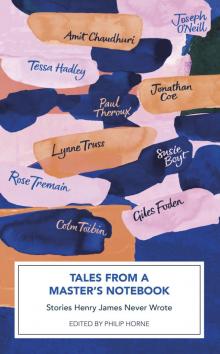 Tales from a Master's Notebook
Tales from a Master's Notebook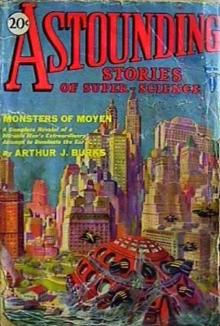 April 1930
April 1930 New Erotica 6
New Erotica 6 Damocles
Damocles The Longest Night Vol. 1
The Longest Night Vol. 1 The Golden Age of Science Fiction Volume VI: An Anthology of 50 Short Stories
The Golden Age of Science Fiction Volume VI: An Anthology of 50 Short Stories (1/15) The Golden Age of Science Fiction: An Anthology of 50 Short Stories
(1/15) The Golden Age of Science Fiction: An Anthology of 50 Short Stories Eye of Terra
Eye of Terra ONCE UPON A REGENCY CHRISTMAS
ONCE UPON A REGENCY CHRISTMAS Nexus Confessions
Nexus Confessions Passionate Kisses
Passionate Kisses War Without End
War Without End Doctor Who: Time Lord Fairy Tales
Doctor Who: Time Lord Fairy Tales Gotrek and Felix: The Anthology
Gotrek and Felix: The Anthology WESTERN CHRISTMAS PROPOSALS
WESTERN CHRISTMAS PROPOSALS The Journey Prize Stories 27
The Journey Prize Stories 27 The Silent War
The Silent War Liaisons
Liaisons Ellora's Cavemen: Tales from the Temple IV
Ellora's Cavemen: Tales from the Temple IV Ellora's Cavemen: Tales from the Temple II
Ellora's Cavemen: Tales from the Temple II Some of the Best From Tor.com, 2013 Edition: A Tor.Com Original
Some of the Best From Tor.com, 2013 Edition: A Tor.Com Original Urban Occult
Urban Occult Fractures
Fractures The Stories: Five Years of Original Fiction on Tor.com
The Stories: Five Years of Original Fiction on Tor.com The Penguin Book of Modern British Short Stories
The Penguin Book of Modern British Short Stories Mortarch of Night
Mortarch of Night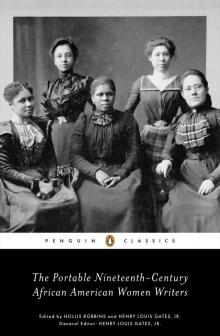 The Portable Nineteenth-Century African American Women Writers
The Portable Nineteenth-Century African American Women Writers The Golden Age of Science Fiction Volume VII: An Anthology of 50 Short Stories
The Golden Age of Science Fiction Volume VII: An Anthology of 50 Short Stories Holy Bible: King James Version, The
Holy Bible: King James Version, The Eight Rooms
Eight Rooms sanguineangels
sanguineangels DarkNightsWithaBillionaireBundle
DarkNightsWithaBillionaireBundle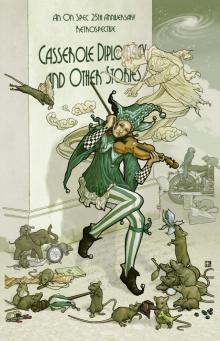 Casserole Diplomacy and Other Stories
Casserole Diplomacy and Other Stories How I Survived My Summer Vacation
How I Survived My Summer Vacation Alfred Hitchcock Presents: 16 Skeletons From My Closet
Alfred Hitchcock Presents: 16 Skeletons From My Closet Lords, Ladies, Butlers and Maids
Lords, Ladies, Butlers and Maids The B4 Leg
The B4 Leg Ellora's Cavemen: Tales from the Temple I
Ellora's Cavemen: Tales from the Temple I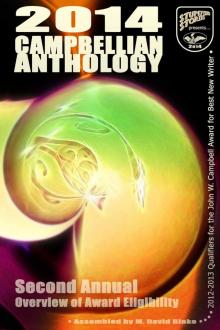 2014 Campbellian Anthology
2014 Campbellian Anthology There Is Only War
There Is Only War Obsidian Alliances
Obsidian Alliances 12 Gifts for Christmas
12 Gifts for Christmas Scary Holiday Tales to Make You Scream
Scary Holiday Tales to Make You Scream 25 For 25
25 For 25 The Plagues of Orath
The Plagues of Orath And Then He Kissed Me
And Then He Kissed Me Star Trek - Gateways 7 - WHAT LAY BEYOND
Star Trek - Gateways 7 - WHAT LAY BEYOND Laugh Your Head Off Again and Again
Laugh Your Head Off Again and Again The Balfour Legacy
The Balfour Legacy Golden Age of Science Fiction Vol XI
Golden Age of Science Fiction Vol XI (3/15) The Golden Age of Science Fiction Volume III: An Anthology of 50 Short Stories
(3/15) The Golden Age of Science Fiction Volume III: An Anthology of 50 Short Stories Shas'o
Shas'o Astounding Science Fiction Stories: An Anthology of 350 Scifi Stories Volume 2 (Halcyon Classics)
Astounding Science Fiction Stories: An Anthology of 350 Scifi Stories Volume 2 (Halcyon Classics) Twists in Time
Twists in Time Meduson
Meduson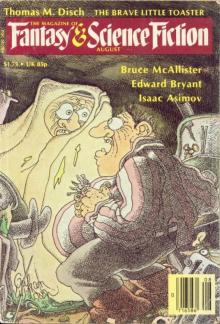 The Magazine of Fantasy & Science Fiction - August 1980
The Magazine of Fantasy & Science Fiction - August 1980 The Journey Prize Stories 22
The Journey Prize Stories 22 The Book that Made Me
The Book that Made Me Angels of Death Anthology
Angels of Death Anthology Ask the Bones
Ask the Bones Emergence
Emergence Beware the Little White Rabbit
Beware the Little White Rabbit Xcite Delights Book 1
Xcite Delights Book 1 Where flap the tatters of the King
Where flap the tatters of the King The Journey Prize Stories 21
The Journey Prize Stories 21 Tales of the Slayer, Volume II
Tales of the Slayer, Volume II Glass Empires
Glass Empires Golden Age of Science Fiction Vol XII
Golden Age of Science Fiction Vol XII (2/15) The Golden Age of Science Fiction Volume II: An Anthology of 50 Short Stories
(2/15) The Golden Age of Science Fiction Volume II: An Anthology of 50 Short Stories Fairytale Collection
Fairytale Collection Angels!
Angels! Golden Age of Science Fiction Vol XIII
Golden Age of Science Fiction Vol XIII